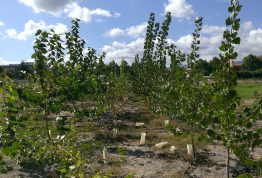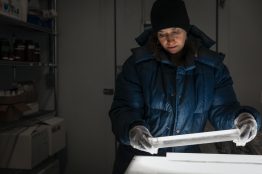The amount of biomass — life — in Earth’s ancient oceans may have been limited due to low recycling of the key nutrient phosphorus, according to new research by the University of Washington and the University of St. Andrews in Scotland. The research, published online Nov. 22 in the journal Science Advances, also comments on the role of volcanism in supporting Earth’s early biosphere — and may even apply to the search for life on other worlds.
Read more at UW Today »Usha Varanasi and Richard Feely named Fellows of the American Association for the Advancement of Science
Usha Varanasi, ’68, and Richard Feely have been named Fellows of the American Association for the Advancement of Science. As part of the Section on Chemistry, Usha was recognized for her distinguished contributions in environmental chemistry and toxicology, particularly in establishing and communicating the impact of environmental contaminants on marine organisms and ecosystems. In the Section on Atmospheric and Hydrospheric Sciences, Richard was recognized for leading the scientific examination of ocean acidification and shifting public policy to address the issue.
Read more at UW Today »Probiotics help poplar trees clean up toxins in Superfund sites
Trees have the ability to capture and remove pollutants from the soil and degrade them through natural processes in the plant. It’s a feat of nature companies have used to help clean up polluted sites, though only in small-scale projects. Now, a probiotic bacteria for trees can boost the speed and effectiveness of this natural cycle, providing a microbial partner to help protect trees from the toxic effects of the pollutants and break down the toxins plants bring in from contaminated groundwater.
Read more at UW Today »Earth's atmosphere more chemically reactive in cold climates
Unseen in the air around us are tiny molecules that drive the chemical cocktail of our atmosphere. As plants, animals, volcanoes, wildfires and human activities spew particles into the atmosphere, some of these molecules act as cleanup crews that remove that pollution. The main molecules responsible for breaking down all these emissions are called oxidants. The oxygen-containing molecules, mainly ozone and hydrogen-based detergents, react with pollutants and reactive greenhouse gases, such as methane.
Read more at UW Today »Nanometer-scale image reveals new details about formation of marine shells
Unseen out in the ocean, countless single-celled organisms grow protective shells to keep them safe as they drift along, living off other tiny marine plants and animals. Taken together, the shells are so plentiful that when they sink they provide one of the best records for the history of ocean chemistry. Oceanographers at the University of Washington, the University of California, Davis and the Pacific Northwest National Laboratory have used modern tools to provide an atomic-scale look at how that shell first forms.
Read more at UW Today »





